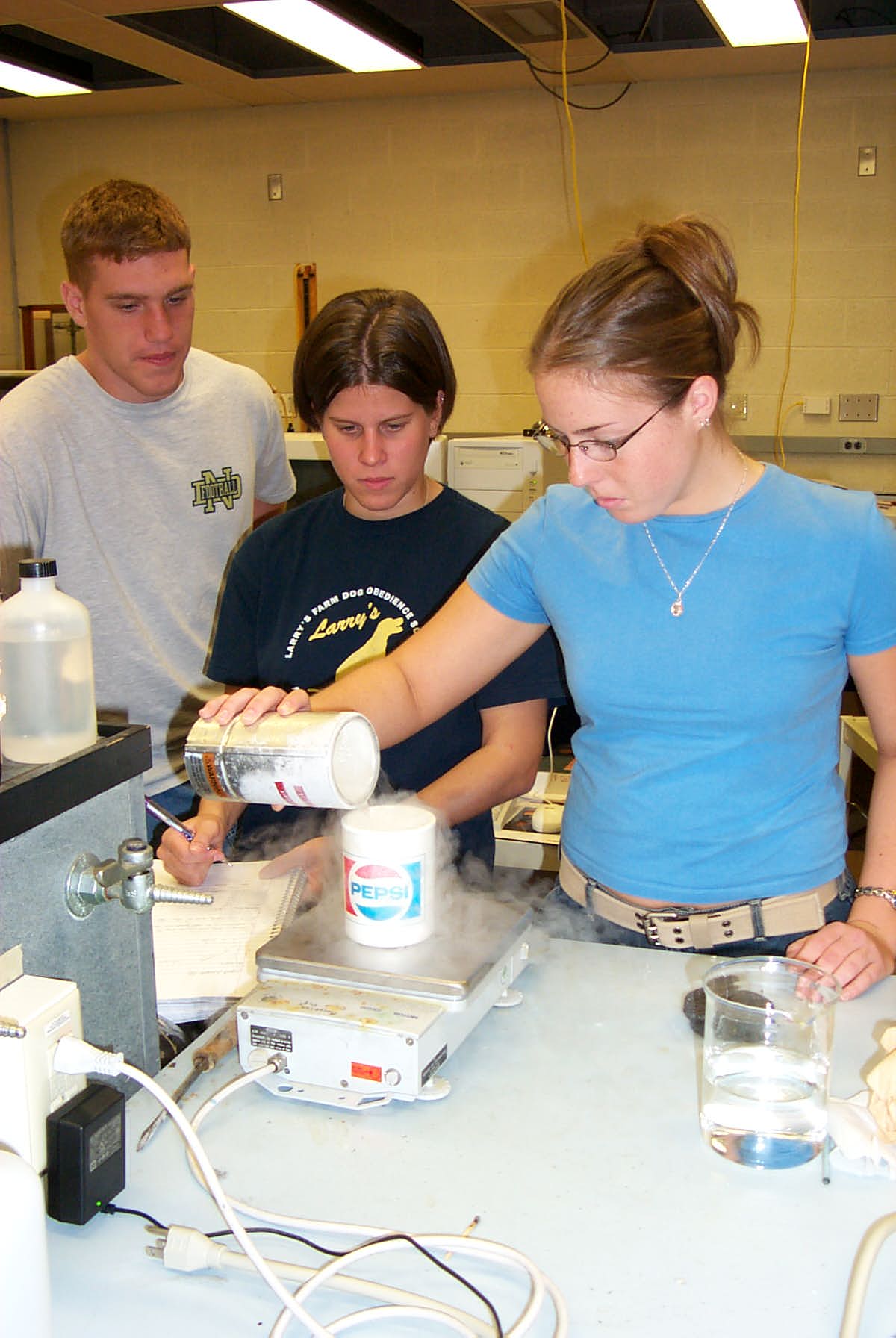
A serious hazard associated with simple asphyxiants such as nitrogen is represented by the question "what volume of vented N2 would displace ALL the air in the room?" It is of course not a simple question, but can be reduced to a simplistic but meaningful scenario. Get measurements of the room, assume N2 ideality (24.5 L/mol at STP), and then calculate what volume of liquid N2 at its bp would expand to fill the room's volume at STP.
Simplify the numbers and it boils down to multiplying: ______ ft3 * 0.0399 L liquid N2/ft3 room
|
Examples |
||
| volume of room |
liters of liquid N2 that would fill this volume when dispersed uniformly at STP |
Comment |
| 640ft3 | 25.5 L | a small bedroom is about 8' x 10' x 8' |
| 15,000 | 599 L | WTHR 413 is approx 60' x 25' x 10' |
| 6,000 | 239 L | WTHR 365 is approx this size |
What's wrong with this picture? If the photo is gone, well, that's a fair indication that it was removed from the Moravian College website where I found it (while looking up the density of LN2). It is/was clear advertisement of the fact that students were not required in this case to wear the commonly accepted PPE for working with liquid nitrogen.